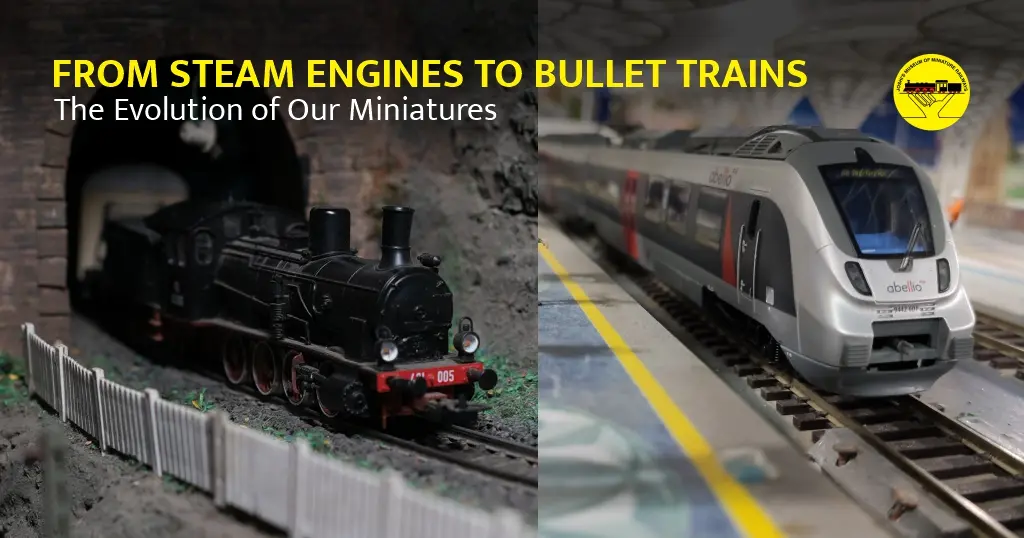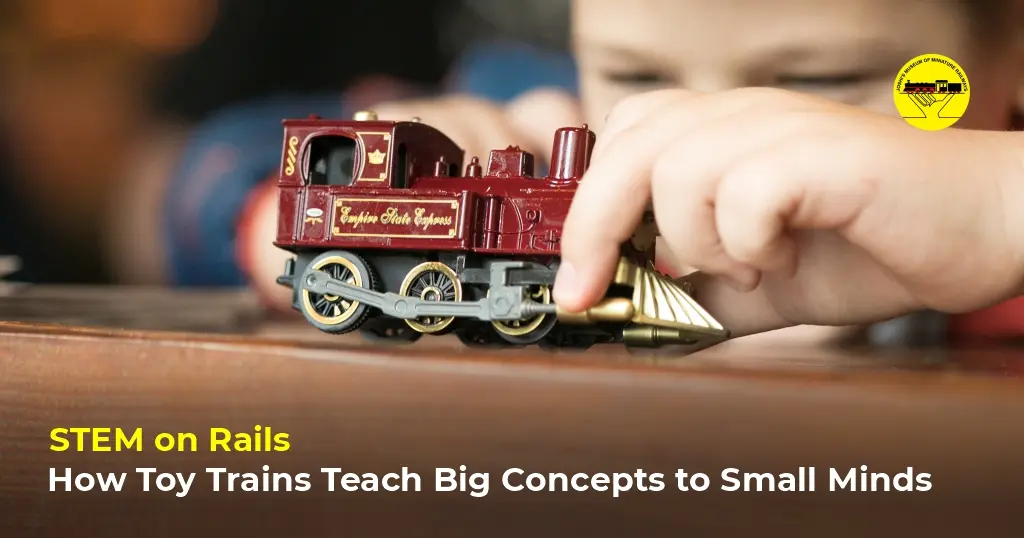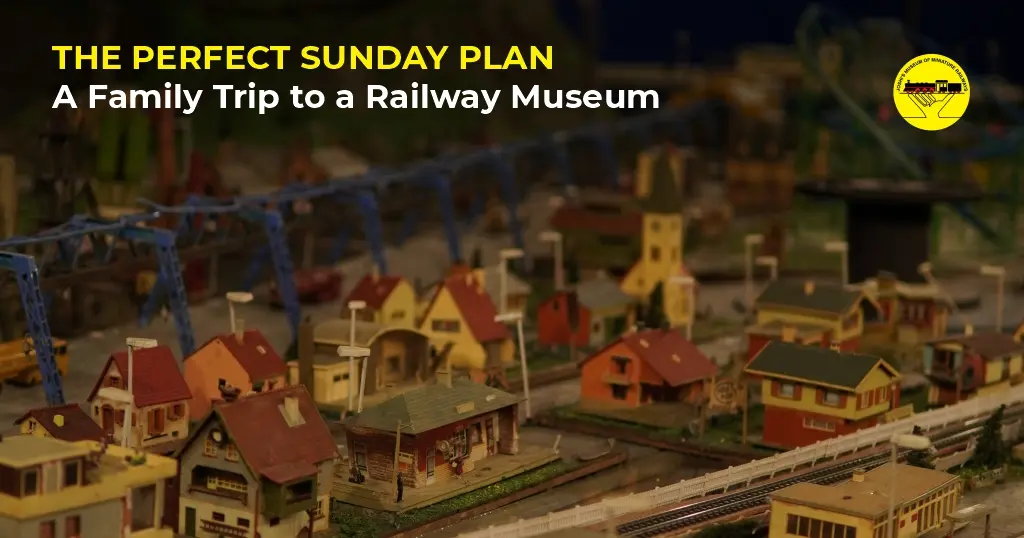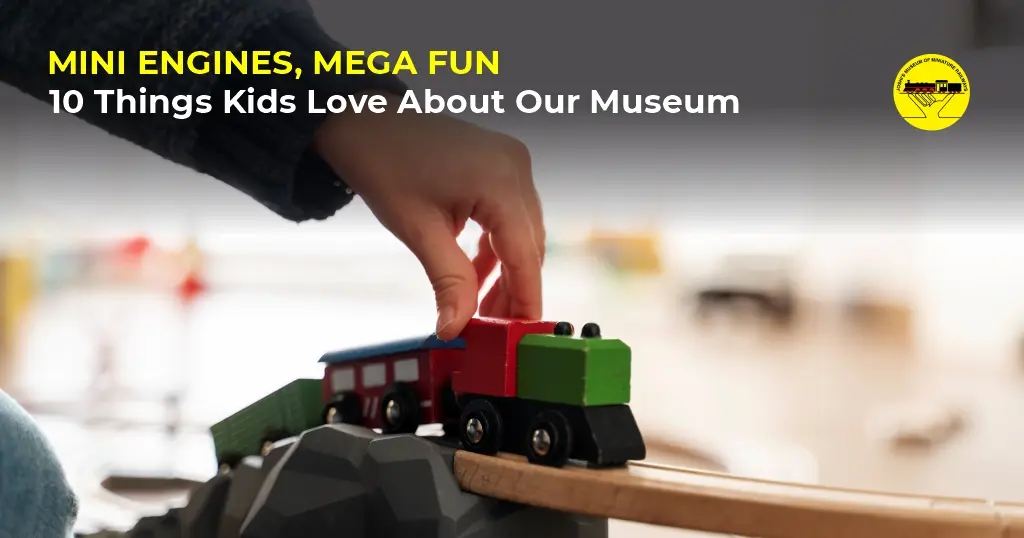Step into Joshi’s Museum of Miniature Railways, and you’re not just seeing tiny trains run on tracks, you’re witnessing decades of engineering evolution hidden beneath the surface.
What began as a handcrafted world of steam engines and simple circuits has quietly grown into a complex, computer-controlled city in motion. Over the years, the museum’s miniature layout has transformed in ways most visitors never notice, but every upgrade tells a story of ingenuity, perseverance, and science.
This blog takes you behind the glass to trace how Joshi’s miniature world has changed from its earliest days to its digital present.
Childhood Memories: Where the Story Begins
For many Punekars, Joshi’s Museum is woven into childhood. At the entrance, a traffic signal replica greeted us: red for “wait,” green for “showtime.” The staircase leading in resembled a life-sized railway compartment, making the experience immersive even before the trains appeared.
Inside, the story was the show. Lights dimmed, trains whistled, bridges lifted, and airplanes took off. For children, though the trains fascinated, it was also the cars, tiny Hot Wheels-like models, that made the city feel alive.
The Live Era: Commentary and Control by Hand
In the 1990s and early 2000s, each show was brought to life with live commentary. Initially Bhau Joshi himself would narrate using a microphone, guiding audiences through the miniature landscape. Later, other narrators and voiceover artists took over.
This made the shows personal and dramatic, but also inconsistent. Live commentary was possible only on weekends or when schools booked special visits. It required not just trains, but storytellers.
At the same time, the layout’s control system was astonishingly complex:
- Over 5 kilometers of wiring ran through the platform.
- Every action point, a bridge, a light, a moving vehicle, had two wires extending back to the main control panel.
- Operators managed 256 switches to trigger these effects.
Training a new operator took one to two months, and maintenance was a nightmare. Finding a single faulty wire in a dense bundle of 100-foot cables could take hours. Since the platform rotated, breakages were frequent.
It was a system that worked, but only with immense human skill and patience.
The Digital Leap: A Network of Cards
In 2009–2010, the museum embraced its boldest change: computerization.
Instead of routing every wire to the control panel, the Joshi team installed localized control cards beneath the setup. Each card managed 4–5 actions, with the cards linked together like a local area network (LAN). A single cable then connected the system back to the computer.
The results were transformative:
- Wiring reduced from 5 km to just 1–1.5 km.
- Faults became easier to isolate and fix.
- Training time for operators dropped dramatically.
- Maintenance costs and breakdowns decreased.
The transition wasn’t outsourced. It was designed in-house by Ravi Joshi with help from programmers. Quietly, behind the curtain, the museum leapt from analog to digital.
Models That Came and Went
While the wiring and control systems evolved invisibly, the miniature vehicles themselves have also gone through subtle but important changes. The most memorable shift for long-time visitors was the retirement of the trolleybus, a rare model that once ran along a flyover road. Like its real-world counterpart, it drew power from delicate overhead wires, making it one of the most technically sophisticated models in the entire setup. The trolleybus glided silently along its path, held in place by twin poles connecting to the tiny electric lines above.
Unfortunately, when its motors began to fail, no replacements were available since no company produced that scale anymore. The trolleybus was eventually removed, and the road it once dominated was filled with miniature cars, a simpler but necessary substitution.
Other models have fared better, though none are immune to the wear and tear of thousands of shows over decades. Trains are carefully maintained, and whenever a locomotive or carriage wears out, the team quietly replaces it with an identical model so the narrative and commentary stay seamless.
In fact, replacing models is not as simple as slotting in a new piece: the commentary and programmed sequences are tied to specific models, meaning every substitution has to align perfectly with the show’s storytelling and technical setup. This is why visitors might never notice the change, but behind the scenes, it requires precision and planning.
Taken together, the changing models show how the museum balances sentimental value with practicality. Some beloved pieces, like the trolleybus, had to give way, while others continue to run reliably thanks to careful curation, repairs, and replacements. Each miniature on the layout is not just decoration, but an active part of a larger system where art, engineering, and storytelling converge.
From Microphone to Voiceover
Another change has been in the narration. The warmth of live commentary has given way to recorded voiceovers. While some visitors miss the human spontaneity, this shift ensures that shows can run all week long, perfectly synchronized with the lights and trains.
For families and school groups, the consistency means every show delivers the same magic, no matter when you visit.
Engineering Beyond the Museum
Joshi’s expertise also found applications outside Kothrud. The Indian Railways commissioned the team to build a Konkan Railway training model in G-scale.
This wasn’t just for display. It replicated real station panels and interlocking systems, allowing station masters in training to simulate live operations. By pressing a button, trainees could see an action play out a “kilometer away” on the miniature, exactly as it would in reality.
It was proof that the museum’s skills were not just artistic, but technically robust.
Today’s Setup: Outputs Without Inputs
Currently, the Kothrud setup operates as an output-only system. The computer sends commands to trigger actions, but it doesn’t receive feedback. That means human operators are still required to start sequences, rather than the system running entirely on its own.
At the Wai branch, the team has already experimented with automation. Shows there can run with a simple start-stop command. Bringing such a system to Kothrud would require dismantling and rebuilding, a massive task, but one Ravi Joshi hopes may be possible in the next 5–6 years.
Reflections: Then and Now
For people of Pune, the journey with Joshi’s Museum mirrors the journey of growing up.
As a child, the traffic signal at the entrance, the train-compartment staircase, and the sheer delight of watching miniature trains and cars made it feel like stepping into another world.
Today, the fascination is layered. We still feel the thrill of the story, but also marvel at the invisible upgrades: the way 5 km of chaotic wiring became a sleek network, the way local cards reduced errors, the way human operators and computers now share control.
It is, in many ways, Pune itself in miniature: evolving, modernizing, but always preserving its soul.
Why Evolution Matters
The beauty of Joshi’s layout is that it looks timeless, yet survives because it changes.
Most visitors never see the hidden science: the transition from switches to software, from analog to digital, from live voices to recorded ones. But that evolution is what has kept the trains running for decades.
It is a reminder that heritage and technology are not opposites. Sometimes, preserving a legacy requires reinventing it behind the scenes.
Conclusion: A City That Never Stands Still
From steam engines to bullet trains, from tangled wiring to computer networks, Joshi’s Museum of Miniature Railways has evolved quietly but brilliantly.
Each visit feels like returning to the same city, yet if you look closely, it’s a city that has grown, adapted, and modernized with time.
For Pune families, it remains a beloved weekend destination. For enthusiasts, it is a case study in engineering and storytelling. And for me, it is proof that magic and science can coexist, one miniature train at a time.







